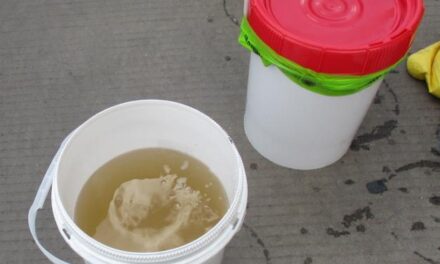SACRAMENTO–The Bureau of Reclamation announced the initial 2014 water supply allocation for Central Valley Project agricultural contractors, municipal and industrial contractors and federal refuges.
The California Department of Water Resources reports that snowpack and precipitation in the Sierra Nevada are historically low and the snow-water content statewide stands at 29 percent of average for this time of year. The February Runoff Forecast by the California Department of Water Resources indicates a critical water year for both the Sacramento and San Joaquin valleys.
“This low allocation is yet another indicator of the impacts the severe drought is having on California communities, agriculture, businesses, power, and the environment,” said Michael L. Connor, Reclamation Commissioner. “We will monitor the hydrology as the water year progresses and continue to look for opportunities to exercise operational flexibility in future allocations.
Reclamation is working with our federal partners through the National Drought Resilience Partnership, and we are continuing our efforts with the state to find a long-term, comprehensive solution to achieve the dual goals of a reliable water supply for California and a healthy Bay Delta ecosystem that supports the state’s economy.”
Reclamation began Water Year 2014 (Oct. 1, 2013, to Sept. 30, 2014) with 5.1 million acre-feet of carryover storage in six key CVP reservoirs, which was 43 percent of capacity and 75 percent of the 15-year average for October 1. Since that time, however, the state has continued to experience record dry conditions. On January 17, Governor Edmund G. Brown Jr. proclaimed a Drought State of Emergency.
Reclamation determines the allocation of CVP water for agricultural, environmental, and municipal and industrial purposes based upon many factors. Reclamation underscores that the following initial allocation, based on a conservative runoff forecast, is driven by critically dry hydrologic conditions, water quality requirements, flow objectives, relative priority of water rights, and endangered species protection measures.
Actual deliveries of water will be subject to the State Water Resources Control Board order of January 31, including any subsequent modifications and clarifications to the order.
As drought conditions continue putting further stress on limited water supplies, Reclamation will work with the SWRCB, DWR and all contractors to effectively carry out project operations consistent with all applicable laws.
Earlier this month, Reclamation and the Natural Resources Conservation Service announced they are leveraging federal funds for water delivery agencies and agricultural producers and will provide up to $14 million in funding for water districts and associated growers to conserve water and improve water management. The projects funded through this partnership will help communities build resilience to drought, including modernizing their water infrastructure and efficiently using scarce water resources, while continuing to support the agricultural economy.
Reclamation also recently released the 2014 CVP Water Plan that outlines numerous actions to help water users better manage their water supplies during drought conditions, such as expanding operational flexibility and streamlining the water transfer process.
North-of-Delta Contractors
Sacramento River Agricultural water service contractors North-of-Delta are allocated zero percent of their contract supply of 443,000 acre-feet.
M&I water service contractors North-of-Delta who are serviced by Shasta Reservoir on the Sacramento River are allocated 50 percent of their historic use.
Sacramento River Settlement Contractors, whose water supply is based upon senior water rights and is subject to pre-established Shasta Reservoir inflow criteria, are allocated 40 percent of their contract supply of 2.2 million acre-feet.
American River M&I water service contractors North-of-Delta who are serviced by Folsom Reservoir on the American River are allocated 50 percent of contract supply of 2.2 million acre-feet.
American River M&I water service contractors North-of-Delta who are serviced by Folsom Reservoir on the American River are allocated 50 percent of their historic use.
In-Delta The Contra Costa Water District, which receives water directly from the Delta, is allocated 50 percent of its historic use amount of 170,000 acre-feet.
South-of-Delta Contractors Agricultural water service contractors South-of-Delta are allocated 0 percent of their contract supply of 1.965 million acre-feet.
M&I water service contractors South-of-Delta are allocated 50 percent of their historic use.
San Joaquin River Exchange and Settlement Contractors, whose CVP water supply allocation is subject to pre-established Shasta Reservoir inflow criteria, are allocated 40 percent of their contract supply of 875,000 acre-feet.
Wildlife Refuges Wildlife refuges (Level 2) North- and South-of-Delta, which also have allocations subject to pre-established Shasta inflow criteria, are allocated 40 percent of their contract supply of 422,000 acre-feet.
Friant Division Contractors Friant Division contractors’ water supply is delivered from Millerton Reservoir on the upper San Joaquin River. The first 800,000 acre-feet of water supply is considered Class 1, and the next 1.4 million acre-feet is considered Class 2. Based upon DWR’s February WY 2014 Runoff Forecast, the Friant Division water supply allocation is 0 percent of Class 1 and 0 percent of Class 2.
Eastside Water Service Contractors Eastside water service contractors (Central San Joaquin Water Conservation District and Stockton East Water District), whose water supplies are delivered from New Melones Reservoir on the Stanislaus River, are allocated 55 percent of their contract supply of 155,000 acre-feet.
As the water year progresses, changes to hydrology and opportunities to exercise operational flexibility of the CVP are factors and conditions that will influence future allocations.



